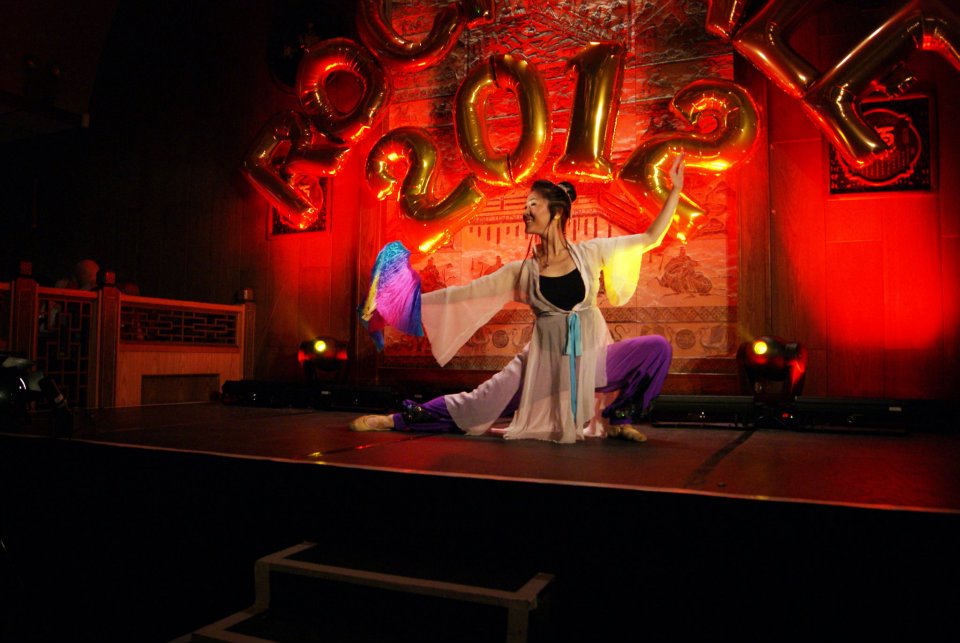A Beautiful Language: Chinese Classical Dance
Chinese Classical Dance originated in ancient China. It combines actions and movements from martial arts with those of classical Chinese dance drama. There is a special emphasis on the role of the eyes and on breathing in the performance, which makes the dance very expressive. Each dance is unique in what it expresses. It is displayed in fineness and elegance, the beauty of the body in motion tells the inner voice of the soul. Without words, Chinese classical dance is a beautiful language which not only pleases one’s eyes, but also pleases one’s heart.
Susie’s Story
Dancing is my passion, my dream. Even when I was young, there was something inside of me that pushed me towards dancing professionally. I was not only good at dancing, but I loved it. Appreciating Chinese dance as a very young child, I began classical Chinese dance training at the age of eight. Chinese classical dance is not just expressive coordinated movements, but it is also a translation of Chinese culture. From practicing and learning from my teachers and mentors I have learned a lot about Chinese traditional culture.
When practicing and training, I always push myself to the very limits of my ability to capture what the chorographer or composer is trying to express. As every dance piece tells a story, I, as a dancer, am a protagonist in this story, just like an actor playing a role in a film. I like to take on the character in my mind, using my body language to depict and represent the story. Loving the limelight of the stage, I get a feeling of ecstasy when all of the lights focus on me. I drop any negative thoughts I might have. It is just me, dancing and enjoying myself on stage.
I like teaching people to dance as well. For two years now, I have been teaching weekly Chinese dance classes. In the beginning, I only had two students, both of whom had tentative notions about Chinese dance. After just two years of training with me, their understanding of Chinese dance broadened immensely. Word got around and the number of students increased, so much so that I now run my own school: Susie’s Chinese Dance School. It is always gratifying to hear students say “we love you” and “we love Chinese dance”.
In addition to my school commitments, I also give Chinese dance workshops in primary schools around the UK. I design each workshop to the finest details, even using numerous props, such as fans, ribbons and handkerchiefs – dancing aids that are popular in Chinese dance. It is always interesting to see the delight of children when they use these props in their dance performances at school. Not only do these tangible props and their use generate a fascination, but it has broadened an interest among these children for China and Chinese culture. They like asking questions about China and, I remember, once a group of year two students sang me a kids’ song in Chinese after my dance class. I was taken aback. My experience in the UK is that children generate an interest in one subject, such as dance, that leads into interest in other subjects, e.g. Chinese history, language and even song.

Yunxuan Li’s Story
Dance is like a shadow of mine which I can never abandon throughout my lifetime. I was born into a family where the arts are very important. My dad is a choreographer and my mum is a famous singer in my hometown Shandong Heze (山东菏泽). They treated me as a student and were always very strict. So the memories of my childhood are filled with practicing Chinese dancing and singing. This precious experience helped me a lot on entry into university. I joined the university’s dancing team and made a lot of friends who shared the same interest with me. We entered a dancing competition in the University Students Art Festival of Hebei (河北) Province together and won first prize.
When I was a graduate student I taught some international students Chinese language and classical dance, from which I obtained confidence, experience and even friendship. Now that I have finished university with a major in Chinese teaching, I can use my experience in Chinese dancing in my language teaching. I have discovered that when teaching Chinese language to international students, paying attention to Chinese classical dance sparks interest and fuels enthusiasm, stimulating students to learn more about China and Chinese culture. I have to say, in my opinion it is one of the most effective ways to communicate internationally. I am very excited that I am about to embark on a new journey in my life as a Chinese teacher in Groningen Confucius Institute, where I can share my knowledge of both Chinese language and Chinese classical dance.
 Share on Facebook
Share on Facebook Share on Twitter
Share on Twitter Share on LinkedIn
Share on LinkedIn